Solving Using Quadratic Formula Worksheet
If you're a high school student or a teacher looking for additional practice in solving quadratic equations using the quadratic formula, then this worksheet is just what you need.
Table of Images 👆
- Quadratic Formula Worksheet
- Quadratic Equation Worksheets with Answers
- Quadratic Formula Worksheet with Answers
- Completing the Square Quadratic Equations Worksheet
- Algebra 2 Quadratic Equations Worksheet
- Graphing Quadratic Equations Worksheet
- Factoring Quadratic Equations Worksheet Answers
- Quadratic Equation Worksheets
- Factoring Quadratic Equations Worksheet
- Quadratic Equation Formula
More Other Worksheets
Kindergarten Worksheet My RoomSpanish Verb Worksheets
Cooking Vocabulary Worksheet
DNA Code Worksheet
Meiosis Worksheet Answer Key
Art Handouts and Worksheets
7 Elements of Art Worksheets
All Amendment Worksheet
Symmetry Art Worksheets
Daily Meal Planning Worksheet
What is the quadratic formula?
The quadratic formula is used to find the solutions to a quadratic equation of the form ax^2 + bx + c = 0, where a, b, and c are constants and a is not equal to 0. The formula is x = (-b ± ?(b^2 - 4ac)) / (2a), where ± indicates that there are two possible solutions, and the symbol ? represents the square root.
How is the quadratic formula derived?
The quadratic formula is derived by completing the square in the general form of a quadratic equation ax^2 + bx + c = 0. By following specific algebraic steps, the process involves isolating x^2, dividing by 'a', rearranging terms, and then solving for x using the square root method. Ultimately, the quadratic formula, x = (-b ± sqrt(b^2 - 4ac)) / 2a, is obtained which provides the roots of any quadratic equation.
When should the quadratic formula be used?
The quadratic formula should be used when you have a quadratic equation in the form of ax^2 + bx + c = 0, where a, b, and c are constants and x is the variable. This formula is used to find the solutions (roots) of the quadratic equation when factoring or other methods are not practical or possible. It provides a straightforward way to calculate the values of x that satisfy the equation.
How do you identify the coefficients in a quadratic equation?
In a quadratic equation in standard form (ax^2 + bx + c), the coefficients can be identified as follows: the coefficient of x^2 is represented by 'a', the coefficient of x is represented by 'b', and the constant term is represented by 'c'. These coefficients help determine the shape and behavior of the parabolic curve represented by the quadratic equation.
What does the discriminant of a quadratic equation represent?
The discriminant of a quadratic equation is a term found under the square root symbol in the quadratic formula. It provides information about the nature of the roots of the equation. Specifically, the discriminant determines whether the roots are real or complex, and whether they are equal, distinct, or imaginary.
What are the different types of solutions that can be obtained from the quadratic formula?
The quadratic formula can yield three types of solutions: two distinct real solutions when the discriminant is positive, indicating that the quadratic equation intersects the x-axis at two points; one repeated real solution when the discriminant is zero, meaning the quadratic equation touches the x-axis at one point; and two complex conjugate solutions when the discriminant is negative, showing that the quadratic equation does not intersect the x-axis but has complex roots.
Can the quadratic formula be used to solve all quadratic equations?
Yes, the quadratic formula can be used to solve all quadratic equations of the form ax^2 + bx + c = 0, where a, b, and c are constants and a is not equal to 0. The formula provides the values of x where the quadratic equation crosses the x-axis, which are the solutions to the equation.
How do you know whether a quadratic equation has real or complex solutions?
You can determine whether a quadratic equation has real or complex solutions by calculating its discriminant, which is the value under the square root in the quadratic formula. If the discriminant is greater than zero, the equation has two distinct real solutions. If the discriminant is equal to zero, the equation has one real solution. If the discriminant is less than zero, the equation has two complex solutions.
Are there alternative methods to solve quadratic equations besides the quadratic formula?
Yes, there are alternative methods to solve quadratic equations besides the quadratic formula. Two common methods include factoring the quadratic equation and using the method of completing the square. Factoring involves rewriting the quadratic equation as a product of two linear factors, while completing the square involves manipulating the equation to create a perfect square trinomial that can be easily solved. These methods can be particularly useful when the quadratic formula may be more complex or difficult to use.
Can the quadratic formula be used for equations that are not in standard quadratic form?
The quadratic formula can only be used for equations that are in standard quadratic form, which is \( ax^2 + bx + c = 0 \). If the equation is not in this form, you may need to manipulate it to fit the standard form before applying the quadratic formula. If the equation is not quadratic or cannot be manipulated to fit the standard form, then the quadratic formula cannot be used.
Have something to share?
Who is Worksheeto?
At Worksheeto, we are committed to delivering an extensive and varied portfolio of superior quality worksheets, designed to address the educational demands of students, educators, and parents.

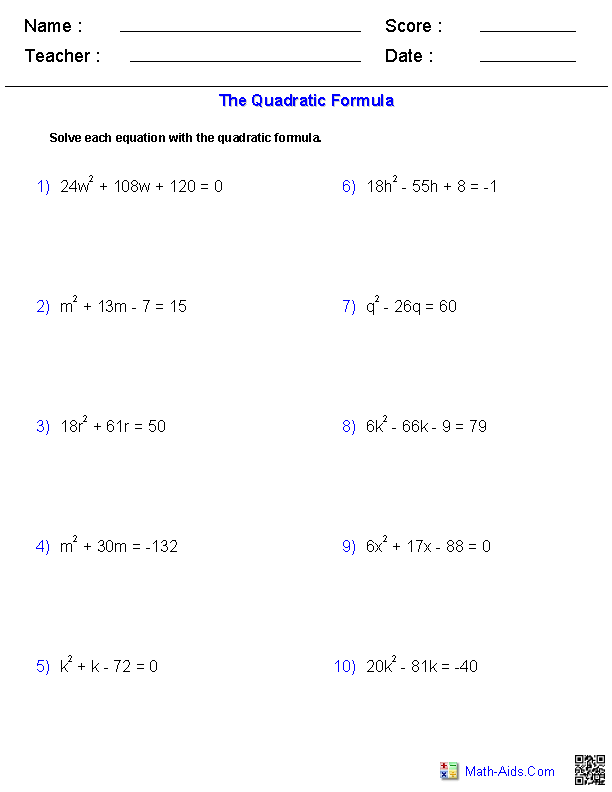



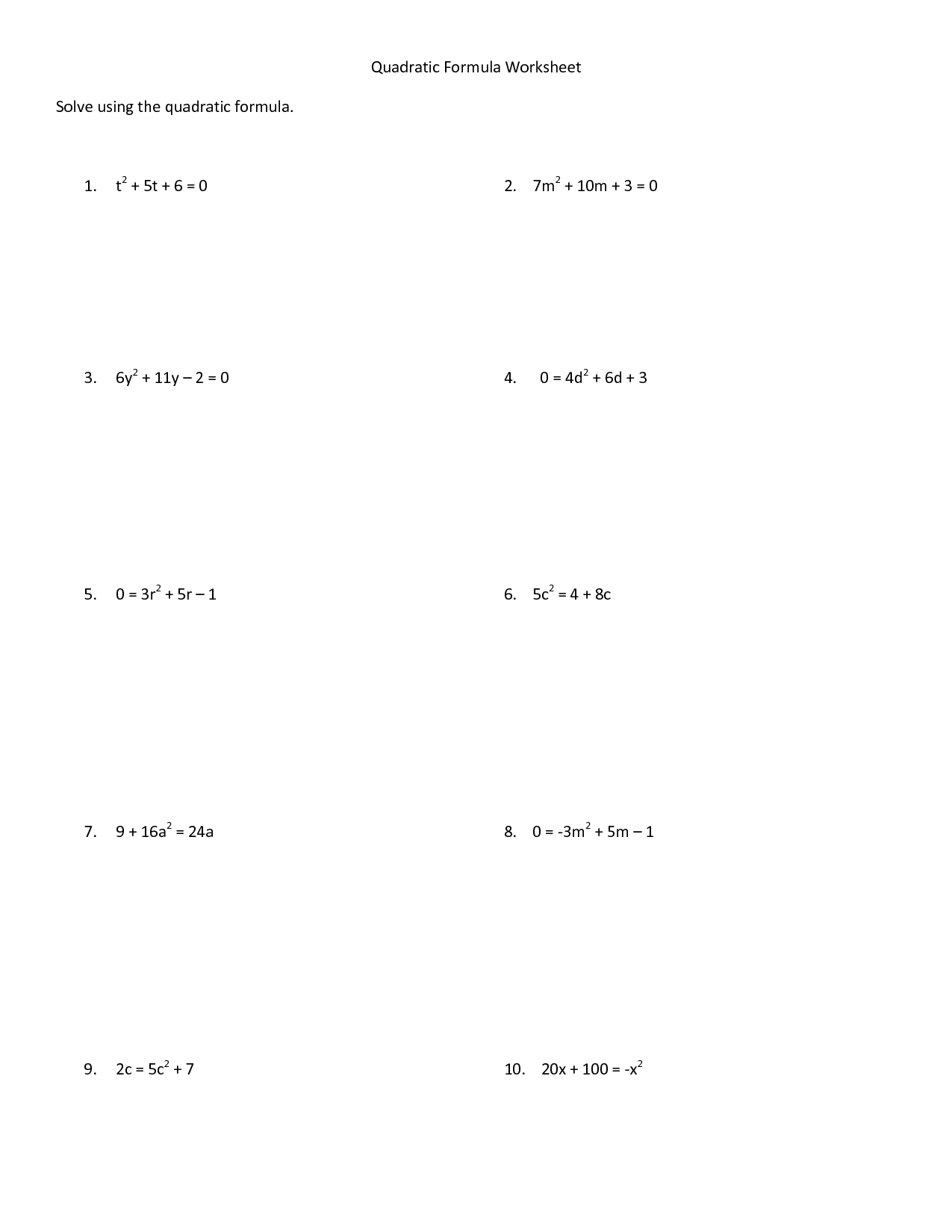
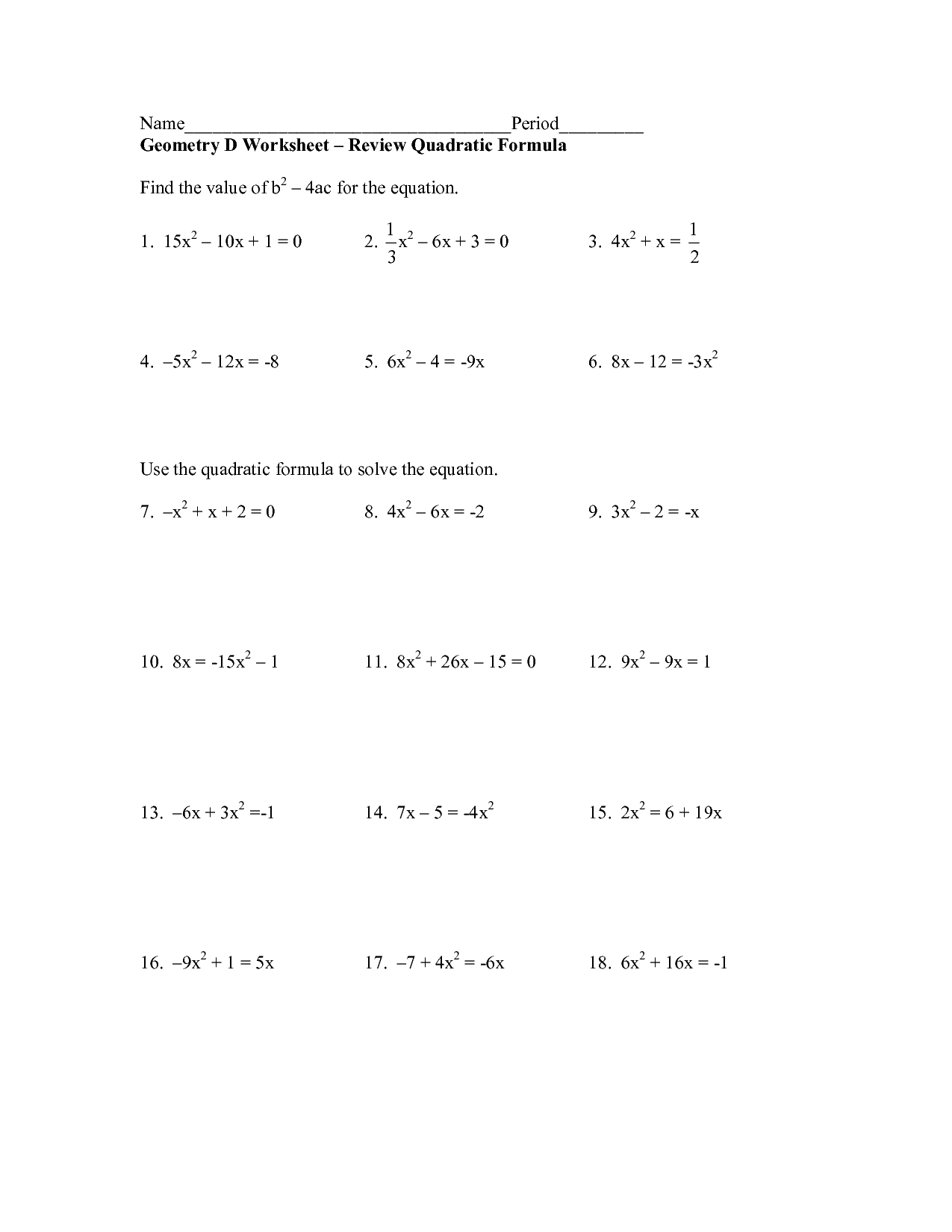
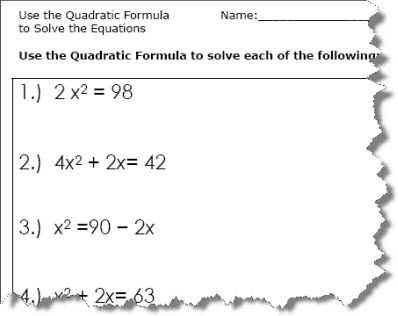
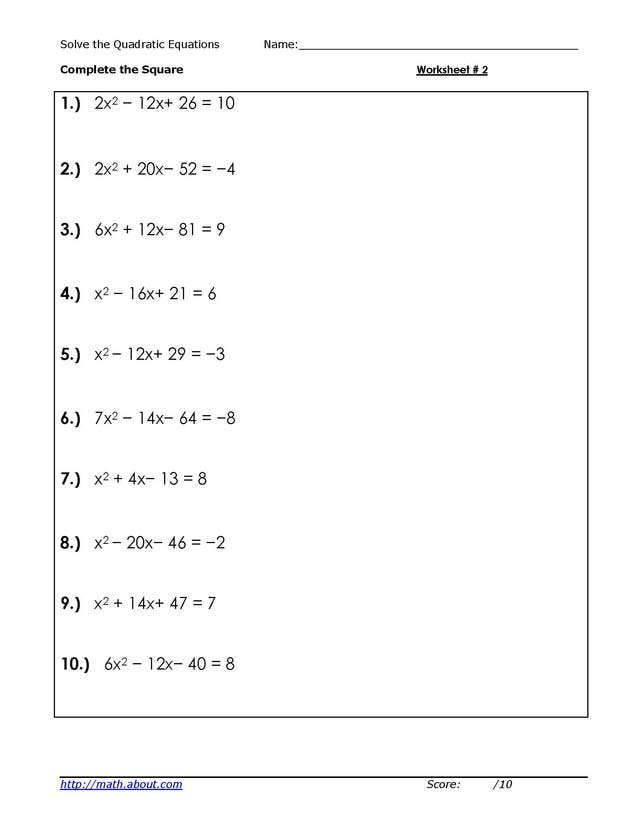
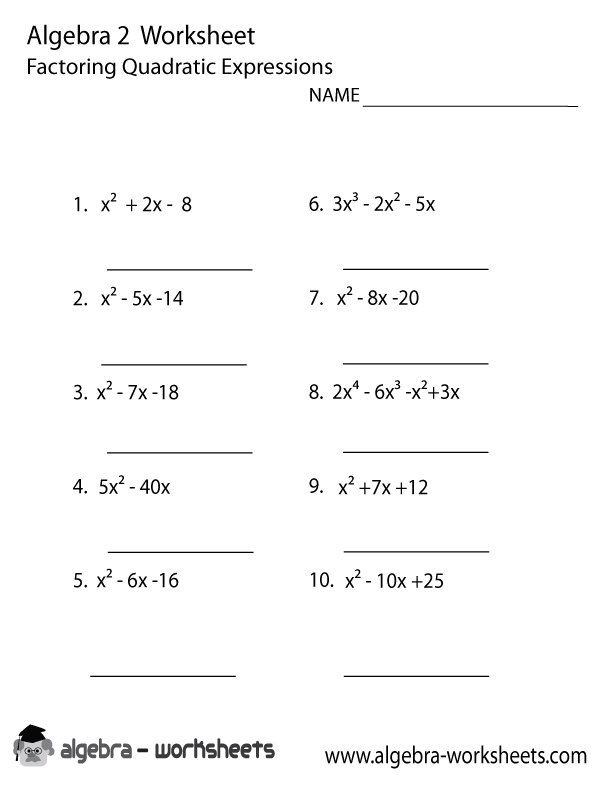
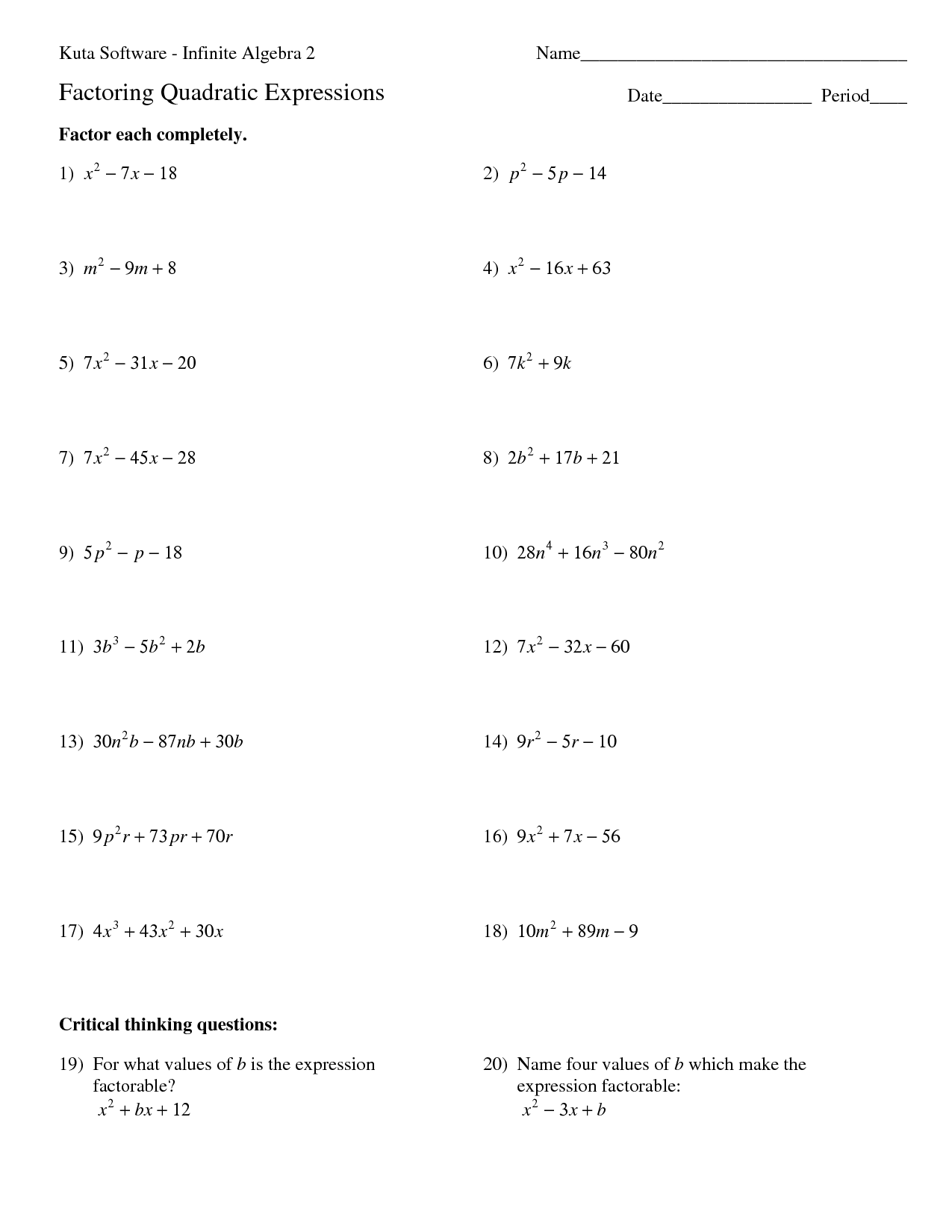
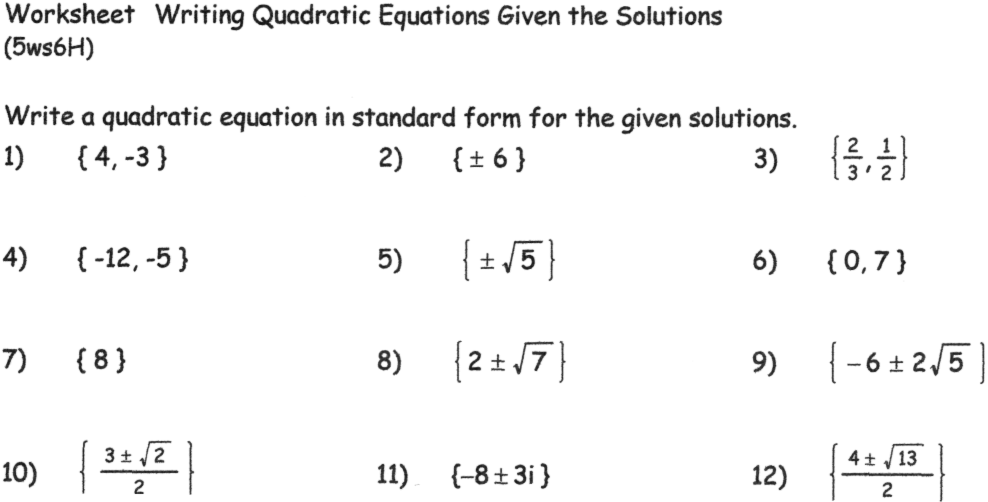
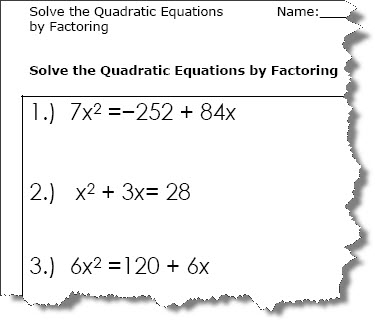
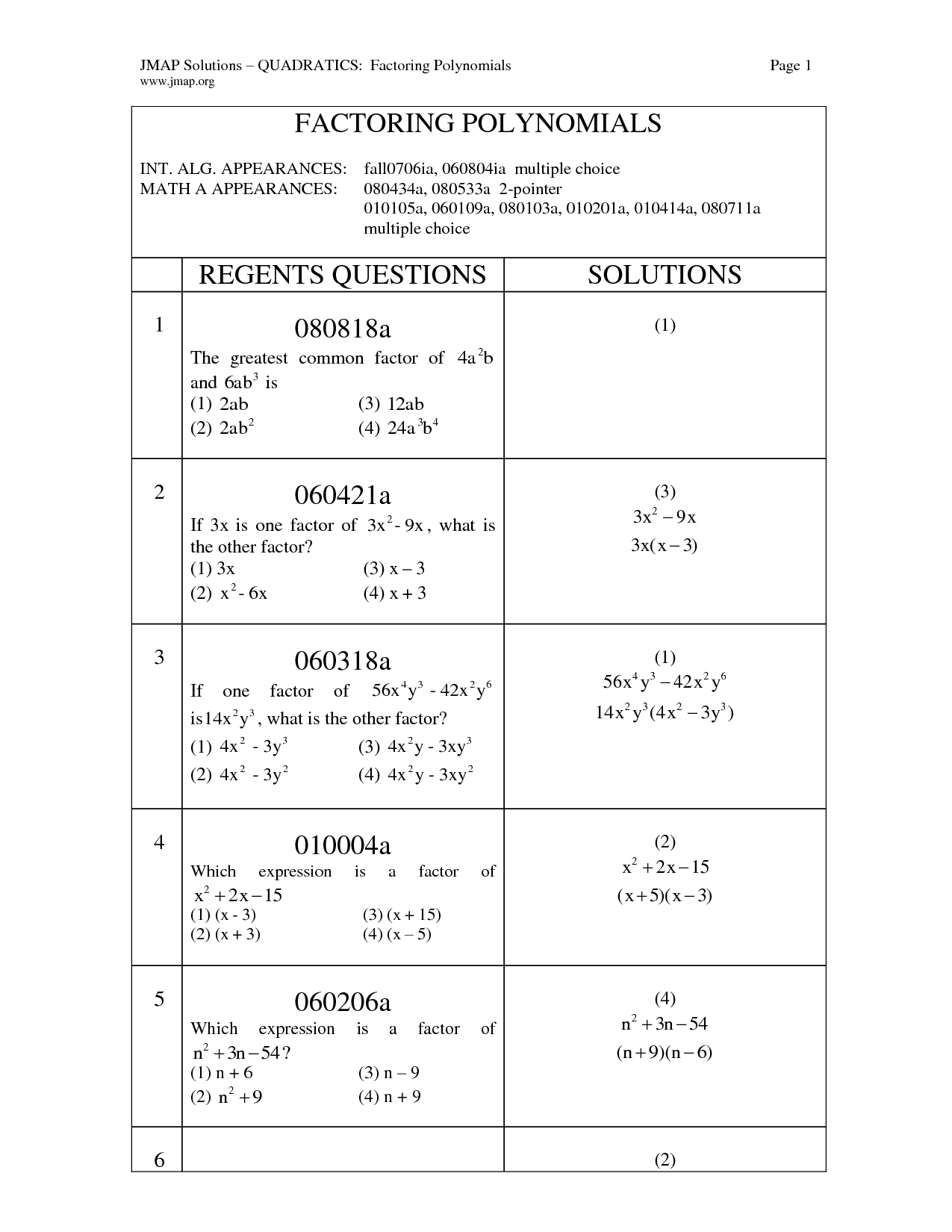
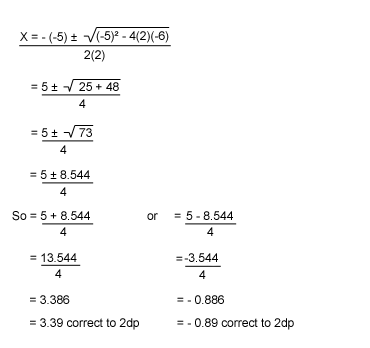














Comments